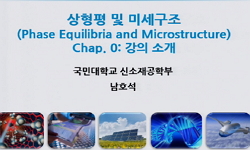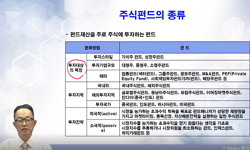This study is focused on the functional meaning of ‘-더-’ that is integrated into a relative clause. ‘-더-’ of the relative clause is always integrated into ‘-은’ and used as the form of ‘-던’. Therefore, the study has tried to exp...
http://chineseinput.net/에서 pinyin(병음)방식으로 중국어를 변환할 수 있습니다.
변환된 중국어를 복사하여 사용하시면 됩니다.
- 中文 을 입력하시려면 zhongwen을 입력하시고 space를누르시면됩니다.
- 北京 을 입력하시려면 beijing을 입력하시고 space를 누르시면 됩니다.
https://www.riss.kr/link?id=A104071346
-
저자
김수태 (신라대학교)
- 발행기관
- 학술지명
- 권호사항
-
발행연도
2014
-
작성언어
Korean
-
주제어
relative clause ; aspect ; tense ; modality ; pre-final ending ; combine restriction ; 관형사절 ; 상 ; 시제 ; 양태 ; 선어말어미 ; 통합 제약
-
등재정보
KCI등재
-
자료형태
학술저널
- 발행기관 URL
-
수록면
5-39(35쪽)
-
KCI 피인용횟수
6
- 제공처
-
0
상세조회 -
0
다운로드
부가정보
다국어 초록 (Multilingual Abstract)
The relativizer ‘-은’ shows that the event of a relative clause precedes the event and utterance time of the main clause or precedes either of the two. And it has no relations with tense or aspect. The relative clause combined with ‘-은’ does not integrate ‘-었-’ or ‘-겠-’ without ‘-더-’. Therefore any pre-final ending cannot be combined before ‘-은’. ‘-었-’ or ‘-겠-’ can be combined only before ‘-던’.
‘-더-’ of ‘-던’ can be integrated when the event of the relative clause and the event of the main clause can be divided. In ‘-더-’ integration, the meaning logic can be explained only in the order of ‘E1 > E2 > U’ or ‘E2 > E1 > U’.
The functional meaning of ‘-더-’ integrated into a relative clause can be explained as ‘a psychological distance in utterance time’ about the event that the speaker perceived before the utterance time. ‘-더-’ of the main clause shows pragmatic meaning through ‘the psychological distance in utterance time,’ but because the relative clause does not suppose the listener, it shows ‘the psychological distance’ to expose different aspect or modality from that of the main clause.
This study is focused on the functional meaning of ‘-더-’ that is integrated into a relative clause. ‘-더-’ of the relative clause is always integrated into ‘-은’ and used as the form of ‘-던’. Therefore, the study has tried to explain the functional meaning of ‘-은’ by analyzing ‘-더-’ and ‘-은’ and then analyze the functional meaning of ‘-더-’ based on the reason that ‘-은’ has some restrictions when it is integrated with ‘-었-’ or ‘–겠-’.
The relativizer ‘-은’ shows that the event of a relative clause precedes the event and utterance time of the main clause or precedes either of the two. And it has no relations with tense or aspect. The relative clause combined with ‘-은’ does not integrate ‘-었-’ or ‘-겠-’ without ‘-더-’. Therefore any pre-final ending cannot be combined before ‘-은’. ‘-었-’ or ‘-겠-’ can be combined only before ‘-던’.
‘-더-’ of ‘-던’ can be integrated when the event of the relative clause and the event of the main clause can be divided. In ‘-더-’ integration, the meaning logic can be explained only in the order of ‘E1 > E2 > U’ or ‘E2 > E1 > U’.
The functional meaning of ‘-더-’ integrated into a relative clause can be explained as ‘a psychological distance in utterance time’ about the event that the speaker perceived before the utterance time. ‘-더-’ of the main clause shows pragmatic meaning through ‘the psychological distance in utterance time,’ but because the relative clause does not suppose the listener, it shows ‘the psychological distance’ to expose different aspect or modality from that of the main clause.
참고문헌 (Reference)
1 장 경희, "현대국어의 양태범주 연구" 탑출판사 1985
2 장 광군, "한국어 연결어미의 표현론" 월인 1999
3 신 현숙, "의미 분석의 방법과 실제" 한국문화사 1986
4 최 현배, "우리말본" 정음문화사 1983
5 송재영, "연결 어미 ‘-더니’ 연구" 국어학회 (53) : 177-198, 2008
6 송 재목, "안맺음씨끝 ‘-더-’의 의미 기능에 대하여" 국어학회 32 : 135-169, 1998
7 김수태, "안맺음씨끝 ‘-더-’의 기능의미" 우리말학회 (32) : 5-38, 2013
8 서 정수, "눈뫼 허 웅 박사 환갑 기념 논문집" 231-265, 1978
9 박 재연, "국어학총서" 국어학회 2006
10 문 숙영, "국어학총서" 국어학회 2009
1 장 경희, "현대국어의 양태범주 연구" 탑출판사 1985
2 장 광군, "한국어 연결어미의 표현론" 월인 1999
3 신 현숙, "의미 분석의 방법과 실제" 한국문화사 1986
4 최 현배, "우리말본" 정음문화사 1983
5 송재영, "연결 어미 ‘-더니’ 연구" 국어학회 (53) : 177-198, 2008
6 송 재목, "안맺음씨끝 ‘-더-’의 의미 기능에 대하여" 국어학회 32 : 135-169, 1998
7 김수태, "안맺음씨끝 ‘-더-’의 기능의미" 우리말학회 (32) : 5-38, 2013
8 서 정수, "눈뫼 허 웅 박사 환갑 기념 논문집" 231-265, 1978
9 박 재연, "국어학총서" 국어학회 2006
10 문 숙영, "국어학총서" 국어학회 2009
11 임 홍빈, "국어문법의 심층" 태학사 1998
12 남 기심, "국어문법의 시제문제에 관한 연구" 탑출판사 1978
13 임 홍빈, "국어문법론 (Ⅰ)" 방송통신대학 출판부 1995
14 김 차균, "국어 시제 형태의 의미" 한글학회 169 : 45-116, 1990
15 崔東柱, "국어 시상체계의 통시적 변화에 관한 연구" 서울大學校 大學院 1995
16 김 창섭, "국어 관형절의 과거 시제" 전북대학교 어학연구소 14 : 95-117, 1987
17 서 정수, "‘더’는 회상의 기능을 지니는가?" 한국언어학회 2 (2): 97-127, 1977
18 이 창덕, "‘-더-’에 관한 문제" 연세대학교 한국어학당 13 : 195-218, 1988
19 李潤夏, "{-더-}와 自覺" 한국어문교육연구회 29 (29): 5-36, 2001
20 Comrie, B., "Tense" Cambridge University Press 1985
동일학술지(권/호) 다른 논문
-
판결서 텍스트의 문장 확대 양상에 대한 연구 —판결서 간이화의 관점에서—
- 한글학회
- 남길임
- 2014
- KCI등재
-
선행절에 어미 ‘-지’가 결합된 절이 나타나는 문장에 대한 연구
- 한글학회
- 김건희
- 2014
- KCI등재
-
- 한글학회
- 이현희
- 2014
- KCI등재
-
- 한글학회
- 유승섭
- 2014
- KCI등재
분석정보
인용정보 인용지수 설명보기
학술지 이력
| 연월일 | 이력구분 | 이력상세 | 등재구분 |
|---|---|---|---|
| 2027 | 평가예정 | 재인증평가 신청대상 (재인증) | |
| 2021-01-01 | 평가 | 등재학술지 유지 (재인증) |  |
| 2018-01-01 | 평가 | 등재학술지 유지 (등재유지) |  |
| 2015-01-01 | 평가 | 등재학술지 유지 (등재유지) |  |
| 2011-01-01 | 평가 | 등재학술지 유지 (등재유지) |  |
| 2009-01-01 | 평가 | 등재학술지 유지 (등재유지) |  |
| 2007-01-01 | 평가 | 등재학술지 유지 (등재유지) |  |
| 2004-01-01 | 평가 | 등재학술지 선정 (등재후보2차) |  |
| 2003-01-01 | 평가 | 등재후보 1차 PASS (등재후보1차) |  |
| 2002-01-01 | 평가 | 등재후보 1차 FAIL (등재후보1차) |  |
| 1998-07-01 | 평가 | 등재후보학술지 선정 (신규평가) |  |
학술지 인용정보
| 기준연도 | WOS-KCI 통합IF(2년) | KCIF(2년) | KCIF(3년) |
|---|---|---|---|
| 2016 | 0.84 | 0.84 | 0.77 |
| KCIF(4년) | KCIF(5년) | 중심성지수(3년) | 즉시성지수 |
| 0.87 | 0.83 | 1.332 | 0.3 |




 DBpia
DBpia






